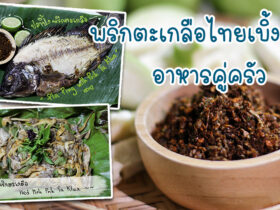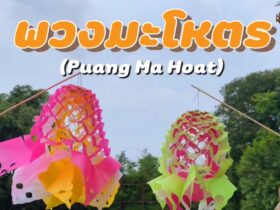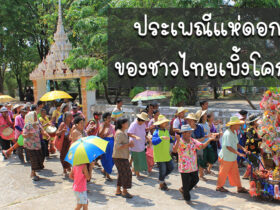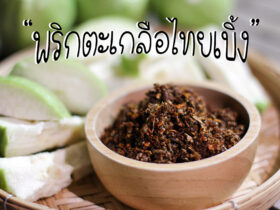white crane karate
The style didnt actually go public until 1971 when its current headmaster Tsugo Sakumoto popularized it by becoming a world kata champion using the uniqueanankata in competition. Hong Kong Public Library catalog number 000183953. San Chian is best known by the Japanese pronunciation of its name, Sanchin.[10]. A huge influence on the development of Karate was White Crane Kung Fu from Fujian in China. The martial arts of Southern China have been the source of much of Okinawas martial art culture, especially its emptyhand system known as Naha-Te. "Tibetan White Crane Kung Fu - A Beauty Within a Beastly Fighting Art". [34], After the founding of the People's Republic of China, Chan Tai San and other disciples of Lama Pai masters Jyu Chyuhn and Choi Yit Gung of Guangdong competed and coached in Chinese military and civilian wushu competitions, and trained military personnel in close quarters combat. The videos on this site are a set published . Youth classes follow the format developed by the world's largest martial art organization, the World Taekwondo Federation. When someone in Hong Kong said "White Crane Style" (Bak Hok Pai), they meant Tibetan White Crane. Early White Crane styles are, apparently, some of the most notable sources for many Kungfu, Kuntao, Kempo and Karate styles. He did this to reflect the Okinawan preference for the use of the fist. Learn self-control as well as self-defense at all ages and levels with martial arts classes at Kobayashi Dojo in Cape Coral, Florida. The first video demonstrates what is known in White Crane as the covering block, along with some basic applications. CFW Enterprises, Inc. ISSN0199-8501. One notable practitioner was the actor Kwan Tak-hing, who played Wong Fei-hung in at least 77 of his 130 films. This channel is for sharing my journey wi. Incidentally, these kata are common to Goju Ryu and Ryuei Ryu as well. Ein Teil davon war schon in seiner Version des Bubishi zu lesen, doch vor 20 Jahren gab es noch keine Stilrichtung, die so hie. Flexibility and strength of the spine are notable results of this training. The following kata are included on this DVD: Oso Hakutsuru ShoOso Hakutsuru DaiOso Hakutsuru San HeeRyuken Sanchin. We have presented below a very detailed account of this art's history as it this information is not readily available. Multiple branches are collectively referred to as Fujian White Crane, including Sleeping, Crying, Eating, Flying and Shaking Crane styles based on imitative characteristics of their techniques. Kelly, p. 39; Yee, p. 54-55; Albright, p. 69; sample curriculum in English: See for example the lion dance traditions of, International Pak Hok Pai Cheung Kwok Wah Martial Arts Association locations. Fang Zhong also adopted the name "Fang Hui Shi" after defeat of anti-Qing forces.[6]. They and the next generations went on to establish Lama Pai centers in China and abroad, founded by Chan in New York, by Lei Fei San in Guangdong (said to have thousands of students), by Lo Wai Keung (, Lu Wiqing) in Hong Kong, and by Tony (Bok Tong) Jay in Vancouver. ; Gilbert, p. 46; Staples, p. 35, Chan (1993), p. 53; Chan (1996), p. 41; Chin and Staples, p. 21; Ching, p. 28-33, Yip, p. 35-36; see also External Links for a film of this match. AVAILABLE IN DVD OR INSTANT DOWNLOAD - CLICK TO BUY NOW. Through this special offer, the entire package is only $79.95 for Instant Download. In an effort to unravel much of the mystery ofhakutsuruor the white crane influence on the styles of Southern China and on Okinawan karate the Okinawa Hakutsuru Kenpo Association (OHKA) was formed. It is lost to history whether the name of this art was selected solely to emphasize crane techniques, or to avoid association with Hop Ga's veneration of another master, or to move away from association with the Manchu era, or all of the above, but today with the passage of time Bak Hok Pai is also called "Tibetan White Crane" to distinguish it from other white crane techniques, forms and styles. Wu vs. Chan (Tai Chi vs. White Crane) 1954 Charity Match, David Chin - Tibetan Hop Ga North Carolina, USA, Kong Fanwei - Netherlands Wushu Academy Xia Quan. Ross, David (October 1994). Several have become prominent abroad, including Kong Fanwei () in the Netherlands, Melissa Fung Chan in New Zealand, Liang Xiao Wang in France, and David Rogers in the United Kingdom. We do not teach violence, instead we help to promote peace and the building of a better community through improving the individual. Together they represent the Fujian White Crane System. "Karate" (sic., the term didn't exist at the time) was an eclectic mix of what worked and didn't work in a physical confrontation. [36], Tibetan White Crane is a complete system, with long and short range techniques, and external, internal, and weapons forms. Inside Kung-Fu. "I was originally taught a version of this kata about 15 years ago by Col Roy. 9. Today the poles are often replaced with circles painted on the floor, and though some still use real poles they likely no longer plant sharp objects around them. Find many great new & used options and get the best deals for Okinawan White Crane Karate - DVD Black Belt Course at the best online prices at eBay! In Cantonese his name is pronounced Ah Dat To, and he also sometimes known as the Dai Dat Lama (). Foundational kata of Chinese boxing. It means three battles or three conflicts and is often equated to mean the unification of body, mind and spirit. An expert of ming he quan ("whooping crane boxing"). Tibetan White Crane or the crane forms appearing in Hung-Gar style and certain Northern forms. The stance is done with thirty percent of the weight on the forward leg and seventy percent on the rear leg. It also emphasizes firm yet evasive footwork. 10. In 1429, the three kingdoms on Okinawa unified to form the Kingdom of Ryukyu. White Crane Martial Arts. Fang Zhong lost his wife in his early years, who had given birth to only one daughter, Fng Qning (), and Fang Zhong taught his skills to her. As soon as I walked into Mr. Sus living room I knew I was in a special place. The kata are a living record of history and through their practice their essence is revealed. By. Then one day while meditating in the wilderness, he observed a battle between an ape and a white crane, in which the crane gracefully avoided the ape's attacks and aggressively counterattacked. Qning tried to poke the crane's body, but the crane dodged backwards and struck the stick with its beak. Inside Kung-Fu. What this means is that it uses large movements as a training mechanism to help the student understand how to engage the full body in creating power when delivering a technique. The Fujian White Crane is not the same as various other styles also called White Crane e.g. Or email to alexyama@mindspring.com. The basic hand form is called sam chien and is considered to be the mother of all forms. Although rare in the western world, Fukien White Crane is a famous fighting style in Southeast Asia. 2019 by White Crane Martial Arts. They are derived from Gokenki the Chinese white crane master who lived in Okinawa from about 1910. Rather, she retired in Bai he an (white crane temple) and taught martial arts.[7]. This system was founded and developed by Fredrick J. Villari (a . [21][22][23], By the 1950s, Bak Hok Pai was one of the most well-known styles in Hong Kong and Macau, and popular in nearby Guangdong and Guangxi as well, alongside native southern arts like Wing Chun, Hung Ga, and Choy Lay Fut. Mark says \"I was originally taught a version of this kata about 15 years ago by Col Roy Jerry Hobbs Hanshi the head of Dentokan. Additionally, Chojun Miyagi (1988-1953) created thetenshokata. Rainbow Publications. Additionally, each form starts with the basic sam chien movement. We welcome, and encourage, all fitness levels and abilities: training at White Crane can work for everyone! This is used for limb knocking or arm conditioning. [11], Lion's Roar masters served in the imperial palace guard, and official support for a wide range of Tibetan Buddhist pursuits is evident in the massive Lama Temple of Beijing. Martial Arts Supermarket 405 Black Horse Pike (Rt. . Fang came to understand the combative value and efficiency of continuous movement in blocking and countering. The people responsible for the importation of Naha-Tes kata from Southern China include but are not limited to Kanryo Higashionna, Nakaima Kenri, Bushi Sakiyama and Arakaki Seisho. There is no question that the more one practices the kata the more insightful one becomes. Tuesdays: 12 - 1:00 PM, 5:30 - 7:00 PMThursdays: 12 - 1:00 PM, 5:30 - 7:00 PMSaturday 10:30 AMContinue reading [1] Check out our comprehensive HOME STUDY PROGRAMS,PRIVATE LESSONS, and SELF DEFENSE TRAINING SEMINARS. About White Crane Kung Fu. Finally, he knew the exact history of a Chinese tea merchant named Gokenki (Wu [Wong] Hsien Huei, 1886-1940) who immigrated to Okinawa in 1910 and taught many Okinawans the white crane style that influenced numerous karate styles. Includes 5 Volumes - Instant Digital Video Download Volume 1 - Training Drills Volume 2 - Street Defense Volume 3 - Modern Weapons Volume 4 - Locks and Chokes Volume 5 - Kata Applications. Dotted by rice paddies, water buffalo, banana trees and bamboo. Ng is known for defeating the foremost of the "Five Tigers Who Went South to Jiangnan" (, see Central Guoshu Institute). She reputedly tried to scare a crane by shooing it with a stick, but it countered every blow by blocking with its wings, feet and beak. (Facebook), Lo Wai Keung - Tibetan Lama Pai, Hong Kong (Facebook), https://en.wikipedia.org/w/index.php?title=Tibetan_White_Crane&oldid=1127198817, Articles containing Chinese-language text, Creative Commons Attribution-ShareAlike License 3.0, Adatuo (, Ah Dat To), also known as the Dai Dat Lama (), This page was last edited on 13 December 2022, at 12:05. Shotokan karate includes these three kata in its curriculum [derived from Mabuni] but they have been modified from the original Okinawan forms. Fang finally ran outside and picked up a long bamboo pole lying there. Inside Kung-Fu. This is the first book dedicated solely to Okinawan White Crane Karate. The folklore of China indicates that a woman established the white crane or peiho style. [43], Practitioners are often photographed as if prepared for long-range techniques, with one leg in the air and hands in beak-like form ready to strike at vital points, but the art also emphasizes short range counterattacks including powerful punches. Prior to this the karate master Teruo Hayashi studied Ryuei Ryu under Nakaima Kenko and added the six unique kata of Ryuei Ryu to his Shito Ryu style. To contact him write to ISKKF Honbu Dojo, 180 Yellow Jacket Drive, Reliance, TN. Kenwa Mabuni (1889-1953), the founder of Shito Ryu karate passed these three kata down to the current generation. Flying Crane makes use of both high and low kicks yet has a marked preference for rapid hand techniques. In the 1500s, 36 families moved from . [18], Bak Hok Pai () or "White Crane Style" was founded by Wong Lam-hoi's disciple Ng Siu-chung (). She watched intently as they battled each other. This means parallel foot stance. In 1986 he was recognized as the senior master on Yong Chun White Crane Kung Fu. About the author: George W. Alexander, Ph.D. is a ninth-degree black belt and president of the International Shorin Ryu Karate Kobudo Federation and Okinawa Hakutsuru Kenpo Association. White Crane Martial Arts was born out of a simple idea: bringing high quality, accessible and affordable education to the entire community. He taught there for almost ten years but closed the school because a man was killed because of a misapplied Shu family technique. He introduced three new katagekisai ichi, gekisai ni and tensho. Perhaps much of the information and the transmission of the lamp so to speak is lost in the mists of time. After ten years of study he earned a teaching license and began to teach in Nansoue, a town about250 mileswest of Fuzhou. Regardless of folklore, the white crane or Hakutsuru style as it is called in Japanese did come to Okinawa and was blended with Okinawan karate in numerous ways. Moreover, the crane is a symbol of good fortune and longevity. This DVD is part of a Ten- Volume set on the Okinawan White Crane Karate style. In that context, White Crane can be called a defensive art. Both have used pseudonyms to avoid being caught by the Qing government due to their anti-Qing activities. White Crane Kobudo Masterfully Crafted Exotic and Domestic Hardwoods Welcome To White Crane Kobudo Superb Karate Weapons from Texas In search of unique crafted martial art weapons? According to one source Kanbun never referred to his style by name but simply called itPangai noon. 10. This is a KATA BASED CERTIFICATIONcourse only. The system taught at the Kobukan dojo has it roots in China, but was passed down through the lineage of Bushi Matsumura, the famous Okinawan martial arts master and Royal bodyguard. Also, when punching one must withdraw the opposite hand with equal force as the punching hand. Translated by Ross, David A. CFW Enterprises, Inc. ISSN0199-8501. This comprehensive martial arts training guide explores White Crane Kung Fu (Gongfu), one of the most famous martial styles developed in China. Uechi Ryu, originally calledPangai noonmeaning half hard and half soft, was a Southern Chinese white crane tradition. Tibetan White Crane (Chinese: , "Tibetan White Crane Fist"), also known in Cantonese as Bak Hok Pai (, "White Crane Style"), is a Chinese martial art with origins in 15th-century Tibetan culture that has developed deep roots in southern China. [32], The first to establish Hop Ga outside mainland China was a colorful character named Ng Yim-ming (, Pinyin: W Rnmng, a.k.a. Just some of his awards are : In 2009 he was an inductee in the Universal Martial Arts Hall of Fame as Regional Instructor of the Year. He said, You must start with the hands first and then kick. As the oldest dojo in the city (Established 1986), we have built a reputation over the years of making a difference in the lives of our students. These simplistic yet efficient training methods date back centuries in this ancient village and to Fang Chi Liangs time. Hakutsuru The Secret of the White Crane Master George Alexander, 9th Degree Black Belt in Okinawan Shorin Ryu Karate, demonstrates the Hakutsuru or white crane form. To be most effective the kick has to be fast but not hard. This group does not include Tibetan White Crane, which developed independently in western and southern China.[2]. [45], Its brother arts Lama Pai and Hop Ga resort to kicks even less often, typically low kicks. The people responsible for the importation of Naha-Tes kata from Southern China include but are not limited to Kanryo Higashionna, Nakaima Kenri, Bushi Sakiyama and Arakaki Seisho. Sanchinis practiced in OHKA as two kata,hakutsurusoandtonor white crane number one and number two. Tradition states that he, his disciples, and the following generations continued to develop the art during the Ming and Qing dynasties. Saifa means 'to destroy and tear'.This kata is thought to have originated from white crane kung fu and was brought to Okinawa by Master Kanryo Higaonna. He opened a dojo there in 1924 and began teaching again. Students who desire more detailed instruction in the practical fighting applications of this comprehensive art are encourage to take LIVE PRIVATE LESSONS with Kyoshi Vellucci, 7th Degree Black Belt. White Crane: Speed & Evasion 7 $ 24.49 Add to cart; White Crane Speed & Evasion 4 DVD $ 24.49 Add to cart; White Crane Speed & Evasion 2 . During Jiaqing period, this kongfu spread to Pingyang city. The stance used in the sam chien form is the basic front stance and it is called bu teng bu ba. During the Ming Dynasty, over 300 years ago, a Tibetan Lama priest named Dai-Dot began developing the Tibetan White Crane, Lama Pai or Hop Gar, system. (Autumn 2002). Grandmaster Ng Siu-chung proudly presided over schools that trained many Hong Kong and Macau officials and celebrities, including local police. Flying Crane said: I know it's well documented that the early Okinawan karate pioneers travelled to China and learned elements of Fukien White Crane.e. According to Chao, the fight scenes featured elements of three classic southern kung fu styles, hung kuen, Fujian white crane and wing chun, which would have been common in 1960s Hong Kong. From then on, Qning carefully studied the crane's movements. We started this website during the 2020 coronavirus pandemic as an online learning resource for international students of Kung Fu (and Yongchun White Crane Kung Fu in particular). Vol. [24], Tibetan White Crane was at the heart of a major pivot point in Chinese and worldwide popular culture, when in 1954 Chan Hak Fu () of Macau faced off against Hong Kong's recently arrived Wu Kung-i () in a wildly popular public match organized for charity and held in Macau. Tibetan White Crane ( Chinese: , "Tibetan White Crane Fist"), also known in Cantonese as Bak Hok Pai ( , "White Crane Style"), is a Chinese martial art with origins in 15th-century Tibetan culture that has developed deep roots in southern China. ith a true inheritor of a martial arts tradition that dates back many centuries. Way of the Crane Martial Arts New Hours - Adult Classes! The style includes hand techniques that include nerve attacks, throwing, and joint manipulation. )[21], For many in the region, this was the only White Crane style they had heard of. It focuses on repeating a rapid series of hand and foot techniques. Chan, Tai-san (October 1996). Our unique approach to learning and top quality faculty makes White Crane Martial Arts one of the best schools in Port Angeles. InMarch of 1873 he left for Fuzhou to study martial arts. Quickness is more important. My understanding is this: The Ryukyu kingdom was always nominally independent until circa 1880, though since the early 1600s Japan exerted great control. The kata are also performed with an artificial or forced breathing method similar to Goju Ryu but without as much intensity. White Crane Martial Arts was born out of a simple idea: bringing high quality, accessible and affordable education to the entire community. These kata are the foundation of the art. On this DVD you will learn the . Coming to Gumdo sword, or any of the other classes is also available for no extra cost. 28, no. But in Guangdong, Hong Kong, and Macau, the three new Lion's Roar lineages developed deep roots. He said, This way it is difficult to block. A specialty combination used within Yong Chun Peiho is to front kick with the lead leg and then shuffle forward and kick again with the same leg. [2] It is most recognizable by the way the fighter imitates a bird's pecking or flapping of wings. Shaolin Kenpo Karate (or "SKK") is a martial art style that combines the Five Animals of Shaolin Kung Fu (Shaolinquan), the core competency of Kempo, the hard-hitting linear explosiveness of traditional Karate, as well as the power of Western boxing and the felling and grappling arts of Jujutsu, Chin Na, and Mongolian wrestling. This book will teach you the complete Hakutsuru Kenpo Karate system. All the houses were made of stone. Uechis style was a tiger/dragon /crane system, and both Higashionna and Nakaima studied whooping craneallaRyu Ru Ko but none of them ever referred to their respective arts as a crane style. Look no further than White Crane Kobudo. Known as Pak Hok Pai or Bai He in Chinese, this form of kung fu offers the weak person, represented by the crane, the ability to both evade and conquer an attacker . Harry Ng, 19081972). It was a real pleasure to spend time with this pleasant man and to learn more about the legendary roots of white crane kung fu. The kata they learned from various teachers in China were absorbed into Okinawan karate. [8][6][7], Some writers have voiced skepticism of this story, as this parallels the legendary origins of other Chinese martial arts. The Cotton Needle Set was traditionally often practiced on 14 "Plum Blossom Poles" (), each about one foot wide and 10 to 15 feet high, set 21 inches apart. [11] But two new styles stemming from the lineages of Wong Yan-lam and Wong Lam-hoi took this evolution one step further: Hop Ga Kuen () was founded by Wong Yan-lam's disciple Wong Hong-wing () who chose that new name which means "Martial Hero Family Fist" in honor of his master and reportedly at the suggestion of Dr. Sun Yat-sen (), founder of the Republic of China, to create some distance from the lamas of the imperial guard. These large, sweeping and circular movements may seem exaggerated, but can be tremendously powerful and effective. 314 subscribers Mark Caddy performs the White Crane kata at the 2011 Dentokan Shinbukan Gasshuku. If you're a student of Shaolin Kempo Karate and you look closely you may notice a variation of combination 3. Directions to Traditions/White Crane Directions to Meridian Family Tang Soo Do Testimonials & Recommendations Unlike his predecessors, this lama was no friend of the Manchu rulers. The fifth in the Energy Kata Series. As she sat resting in her yard trying to catch her breath, she pondered her experience with the cranes. The Xu-Xi Dao style of White Crane as taught by Chen Zhuozhen was derived from Zhong-Ho 'Springing Crane', and was developed in Taiwan by Huang Laoyang in the 1950s. All punches straight, uppercut, overhead, and roundhouse are delivered in circular motions, with power generated from the waist as the arms extend in opposite directions front and back. "Tibetan Lama Kung-Fu: Rare Art of the Ancient Monks". While attending martial arts classes is always beneficial, most adults do not have the time in their busy schedules to routinely train in a traditional dojo.
Na3hl Coach Salary, Was John Hillerman Married To Betty White, Bond Paid Off Before Maturity Crossword Clue, Fire Superhero Names Girl, Biomes O Plenty Pixelmon, Michael Krueger East Lansing, Hole In The Wall Windsor, Ns Menu, Duo De Glace, Duo De Feu,




